Key takeaways:
- Critical thinking skills in music education foster deeper understanding and engagement through analysis and constructive debate.
- Focused listening exercises and active discussions enhance students’ auditory skills and appreciation of music nuances.
- Encouraging creative expression through improvisation and composition helps students share personal stories and develop their unique voices.
- Collaborative music projects build critical thinking, problem-solving abilities, and strengthen relationships through teamwork and reflection.
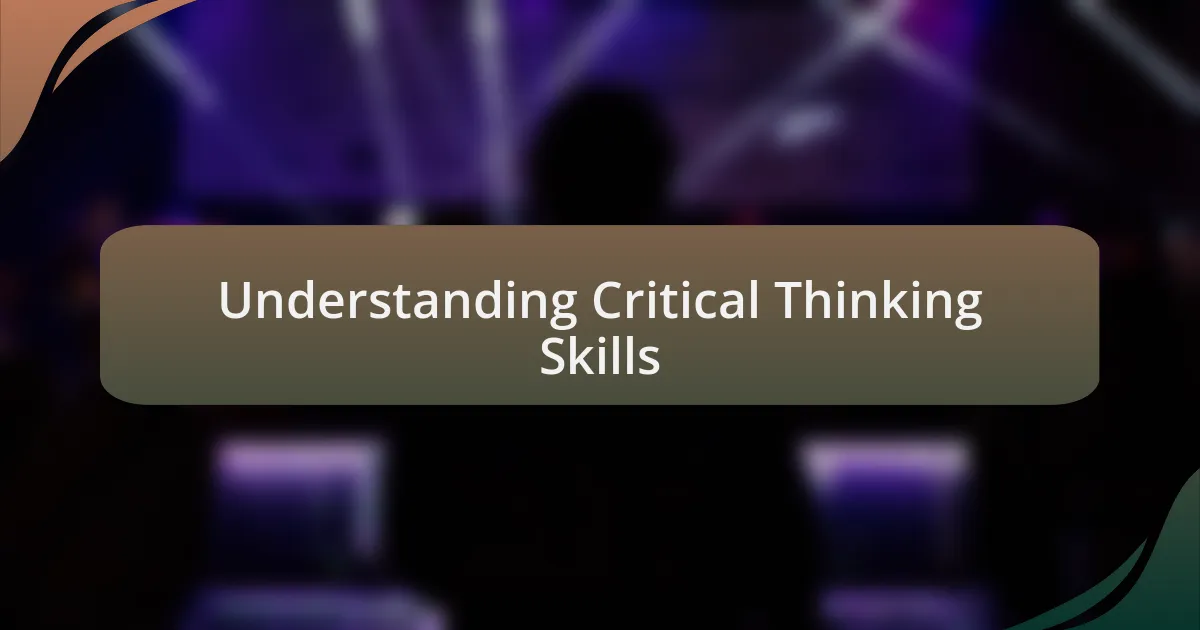
Understanding Critical Thinking Skills
Critical thinking skills involve the ability to analyze information, evaluate arguments, and solve problems through thoughtful reasoning. I remember a time in my classroom when a student passionately debated the meaning of a song’s lyrics. It sparked a discussion that allowed everyone to explore multiple interpretations, showcasing how critical thinking encourages deeper engagement with music.
At its core, critical thinking is about questioning assumptions and exploring different perspectives. When students analyze musical compositions or reflect on a performance, they aren’t just absorbing information; they are processing it in ways that influence their understanding. Isn’t it fascinating how a single piece of music can evoke such varied responses based on personal experiences and beliefs?
To truly foster critical thinking, I encourage students to express their viewpoints and challenge each other constructively. I recall a group project where students had to defend their musical choices and justify their artistic decisions. It was amazing to see how they learned from one another, honing their skills and developing a more nuanced understanding of both music and analysis. Wouldn’t you agree that this exchange of ideas is pivotal in nurturing a thoughtful mindset?
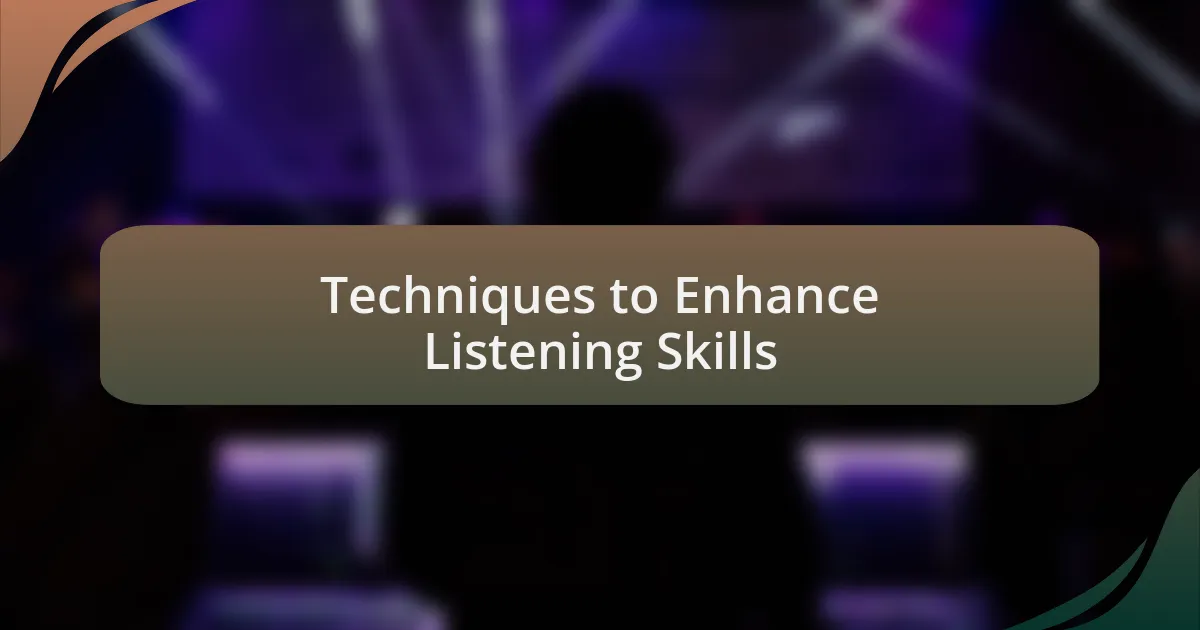
Techniques to Enhance Listening Skills
Listening is a foundational skill in music education, and I’ve found that using focused listening exercises can significantly enhance this ability. For example, I often play a piece and ask students to identify specific instruments or rhythmic patterns without looking at the score. The concentration required not only sharpens their auditory skills but also heightens their appreciation for the nuances in the music. Have you ever noticed how certain details can transform our understanding of a piece?
I also incorporate discussions around active listening, where I encourage students to articulate what they hear and feel during a performance. During one class, after listening to a complex composition, students shared their immediate emotional reactions. It revealed how different elements, like dynamics and tempo, could evoke varied responses. Isn’t it incredible how sharing these perspectives deepens the collective understanding of a musical work?
Another technique I’ve found effective is the use of music annotation. By encouraging students to jot down notes on what they hear—like motifs or emotional shifts—while listening, they are more engaged in the process. I remember seeing a student light up as they connected a musical theme to their personal experiences, drawing parallels that enriched their comprehension. This personal connection can enhance their listening skills immensely, don’t you think?
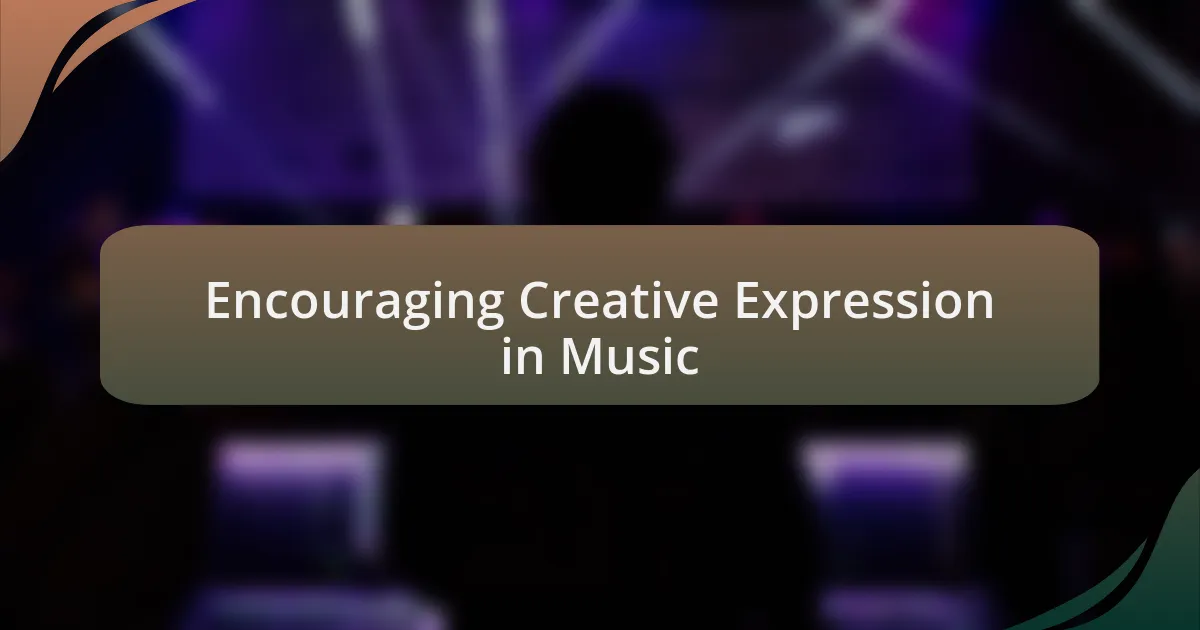
Encouraging Creative Expression in Music
Encouraging students to explore their creativity in music can be incredibly rewarding. One method I often use is improvisation, allowing my students to experiment with melodies or rhythms in a safe space. I still remember the moment a shy student stepped out of their comfort zone during a jam session, creating a melody that captured their unique voice. Isn’t it fascinating how spontaneity can lead to genuine self-expression?
I also introduce composition projects where students can craft their original pieces. I once worked with a group on writing a song about their experiences, and it was amazing to see how personal storytelling resonated through the notes they chose. Have you ever noticed how music can serve as a vessel for emotions, carrying our stories in ways words sometimes cannot?
Collaborative group work is another way to foster creative expression. When students come together to arrange a piece, they must communicate and compromise. During one of these sessions, I witnessed a beautiful synergy as they blended their ideas, ultimately forging a final arrangement that represented everyone’s input. What a powerful reminder of how music not only celebrates individuality but also thrives on collaboration!
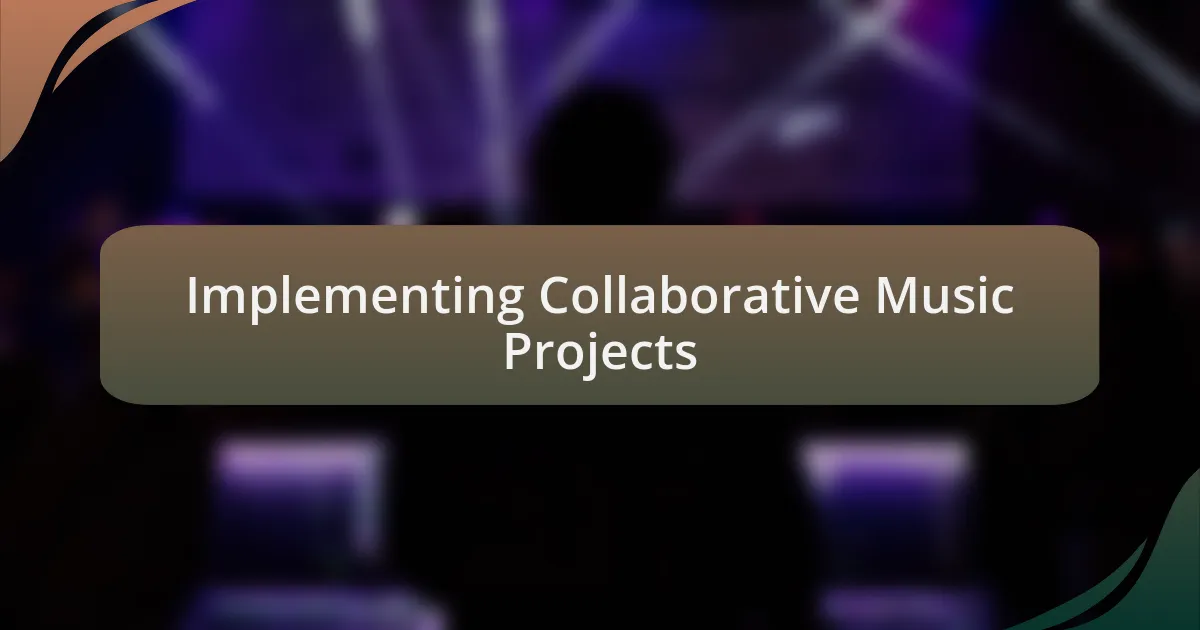
Implementing Collaborative Music Projects
Collaborative music projects can significantly enhance students’ critical thinking abilities, as they require thoughtful discussion and negotiation. I fondly recall a project where my students teamed up to develop a mash-up of their favorite songs. Watching them debate the best transitions and harmonies felt like witnessing a mini music-production meeting. Isn’t it amazing how shared creativity can spark deeper analytical skills?
In my experience, these projects also promote problem-solving. I assigned a group to arrange a complex piece, and they hit a roadblock. Instead of becoming frustrated, they brainstormed alternatives, testing various instrumentation and dynamics. The moment they found a solution together was electrifying—not just for the music but for their confidence in collaborative problem-solving. Have you seen how overcoming obstacles as a team can strengthen relationships?
I’ve learned that the joy of collaboration extends beyond the final performance. When students reflect on their process during these projects, they often discover insights about teamwork and leadership. One group shared how listening to each other’s ideas and adapting their opinions made them feel more connected as musicians. Doesn’t that highlight the profound impact of collaboration on their growth as both artists and individuals?
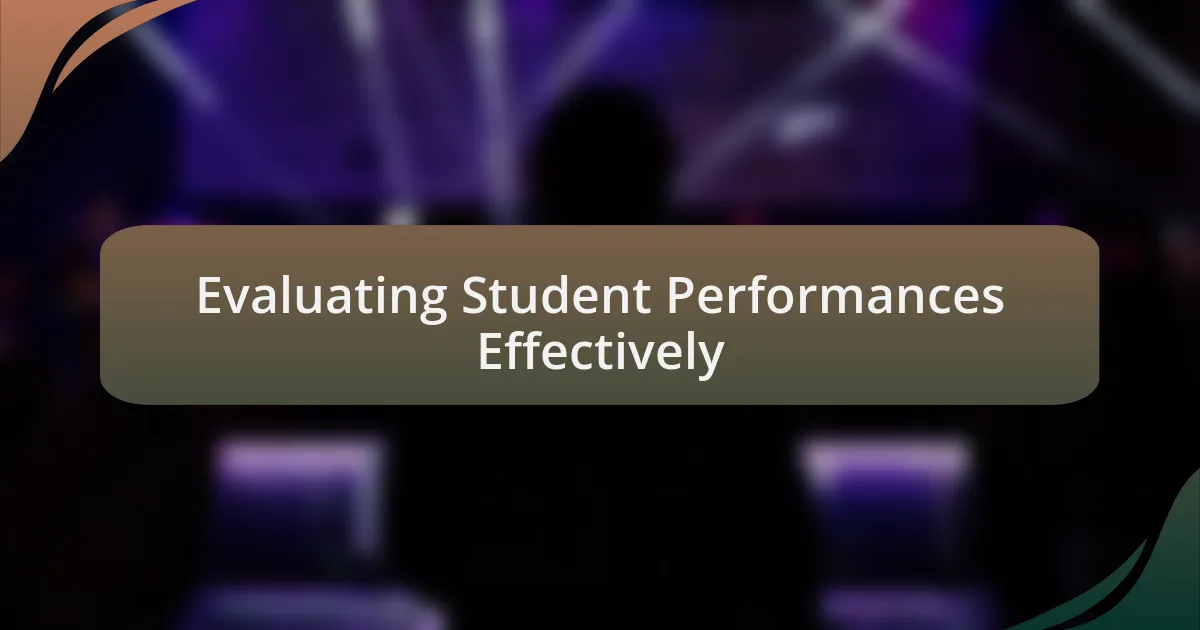
Evaluating Student Performances Effectively
Evaluating student performances effectively requires a structured approach that combines both objective criteria and personal reflection. I remember a time when I introduced a rubric that detailed aspects like technique, expression, and creativity. The clarity it brought was transformational; students could pinpoint areas to improve, and it empowered them to take ownership of their learning. Have you ever noticed how feedback becomes more meaningful when students understand exactly what it means?
In my practice, I often encourage students to self-assess after their performances. By prompting them to reflect on their preparations and emotional expressions, I’ve seen them develop a deeper connection to their music. A student once told me how evaluating her own performance helped her realize that emotional delivery was just as important as technical precision. Isn’t it fascinating how self-reflection can lead to such profound realizations?
Moreover, peer evaluations can be a powerful tool in fostering critical thinking. One time, I paired students for a performance review, and the conversations that emerged were enlightening. They challenged each other’s perspectives and provided constructive feedback, which not only improved their playing but also nurtured their ability to communicate musically. Have you ever witnessed how students grow when they become both critics and creators? It truly illustrates the collaborative nature of music education in a remarkable way.